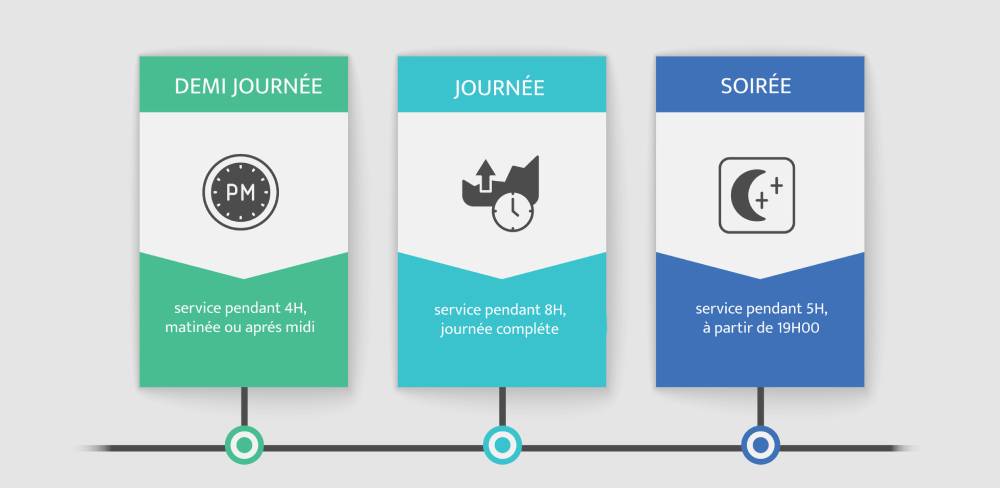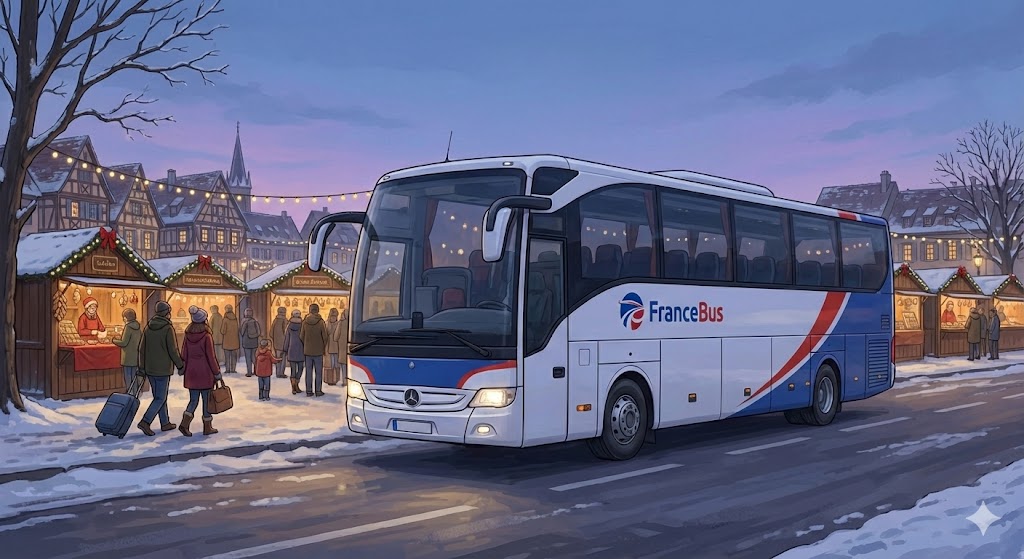Summary
ToggleBus transport regulations
Bus driving times
The maximum driving times are as follows:
· Continuous driving: 4.5 hours maximum without interruption, followed by an interruption of at least 45 minutes, taken in one go; this interruption may be replaced by an interruption of at least 15 minutes followed by a break of at least 30 minutes, spread over the period of continuous driving and the total of which must also reach at least 45 minutes per period of 4.5 hours of driving.
Any work between 9 pm and 6 am is considered night work. Therefore, the duration of continuous driving during the 9 pm – 6 am time slot cannot exceed 4 hours.
Daily driving: 9 hours maximum (the daily driving period is made up of the driving time between two daily rest periods or between a daily rest period and a weekly rest period) and can be extended to 10 hours twice a week. Driving per 2-week period: 90 hours of driving maximum. No more than six consecutive driving days at the end of which a weekly rest period must be taken
Daily rest bus driving
The general rule is that daily rest is 11 consecutive hours (normal daily rest) or 9 hours (reduced daily rest).
The following arrangements are possible:
· Reduction to a maximum of 9 consecutive hours three times a week. Any unused rest hours must then be made up before the end of the following week and linked to at least 8 hours of rest taken at home.
· Splitting possible into a maximum of two periods during the day, subject to meeting both the following conditions
o Total daily rest of 12 hours,
o Comprising a period of at least 9 consecutive hours,
o Not including any period of less than 1 hour.
(Special case: in the case of travel by ferry or train, the daily rest may be split into two parts, subject to:
o That the driver has a bed or a bunk,
o That there is no interruption of more than one hour between the two periods, o That the total duration of daily rest is then increased by 2 hours).
Weekly rest bus driving
A weekly rest period begins at the latest at the end of 6 consecutive days from the previous weekly rest period. The general rule is that weekly rest is 45 consecutive hours (normal weekly rest) or
24 hours (in case of reduced weekly rest)
The following arrangements are possible:
o Reduction to 36 consecutive hours taken at the vehicle's or driver's home base; unused rest hours must then be recovered within the following three weeks, in a single block attached to another rest period of at least 9 hours. o Reduction to 24 consecutive hours taken outside the vehicle's or driver's home base; unused rest hours must then be recovered within the following three weeks, in a single block attached to another rest period of at least 9 hours.
Double crew bus transport legislation – Bus transport regulations
The amplitude is limited to 18 hours, it being understood that each driver must have a rest of at least 9 hours during each period of 30 hours. • This rest is the split arrangement of the daily rest (see above), • This rest can be taken on board the vehicle provided that the vehicle is equipped with a berth and that the vehicle is stationary, • Double crewing is understood to be "from start to finish": if one of the drivers leaves the vehicle before the end of the journey, the provisions of double crewing cannot apply; the 2 discs must therefore be permanently in the tachograph and for the entire journey.
Scope of bus and minibus legislation – Bus transport regulations
The length of the working day must not exceed 12 hours (18 hours in the case of a crew composed of several drivers).
Where operating conditions make it necessary and after consulting the works council or, failing that, the staff representatives, if they exist, and authorisation from the labour inspector, the working hours may be extended to 14 hours subject to the following conditions:
• The daily duration of time spent in the service of the employer must not exceed nine hours,
• The service must include:
o An interruption of at least two and a half continuous hours or two interruptions of at least one and a half continuous hours each, when the amplitude is extended beyond twelve hours and up to thirteen hours;
o An interruption of at least three continuous hours or two interruptions of at least two continuous hours each, when the amplitude is extended beyond thirteen hours.
During these interruptions, the employee does not carry out any activity and has free use of his or her time.
Occupation of the guide seat
Furthermore, with regard to the OCCUPATION OF THE GUIDE SEAT (strapontin located to the right of the driver), only a second driver or a guide or even an approved local escort are authorized to take a seat there.
IN FRANCE, the application of this law remains relatively random in the case where a customer occupies the said guide seat.
However, in Europe, the authorities are uncompromising: for example, in Spain, a fine of €2,300 is imposed if a client occupies the guide seat. We therefore thank you in advance for adapting the number of your participants to this legislation.
The legal framework on bus transport legislation
The legal framework
The rules relating to the working hours of road drivers in passenger transport are based on several legal instruments:
- directly applicable European texts: Regulation (EC) No. 561/2006 of 15 March 2006 on driving times, breaks and rest periods in road transport applicable to drivers of passenger vehicles with more than 9 seats;
- the labor code, the general provisions of which apply when there are no specific rules for employees in the transport sector;
- the transport code, which sets out special rules for road drivers. In part, these rules result from the transposition of Directive 2002/15/EC of 11 March 2002 on the organisation of working time for persons carrying out mobile road transport activities
Source and legislation:
https://www.ecologie.gouv.fr/temps-travail-des-conducteurs-routiers-transport-personnes
Coach transport: your rights
https://www.economie.gouv.fr/dgccrf/Publications/Vie-pratique/Fiches-pratiques/voyage-en-autocar
Legislation on bus driving times, constraints to be strictly observed – bus transport regulations













